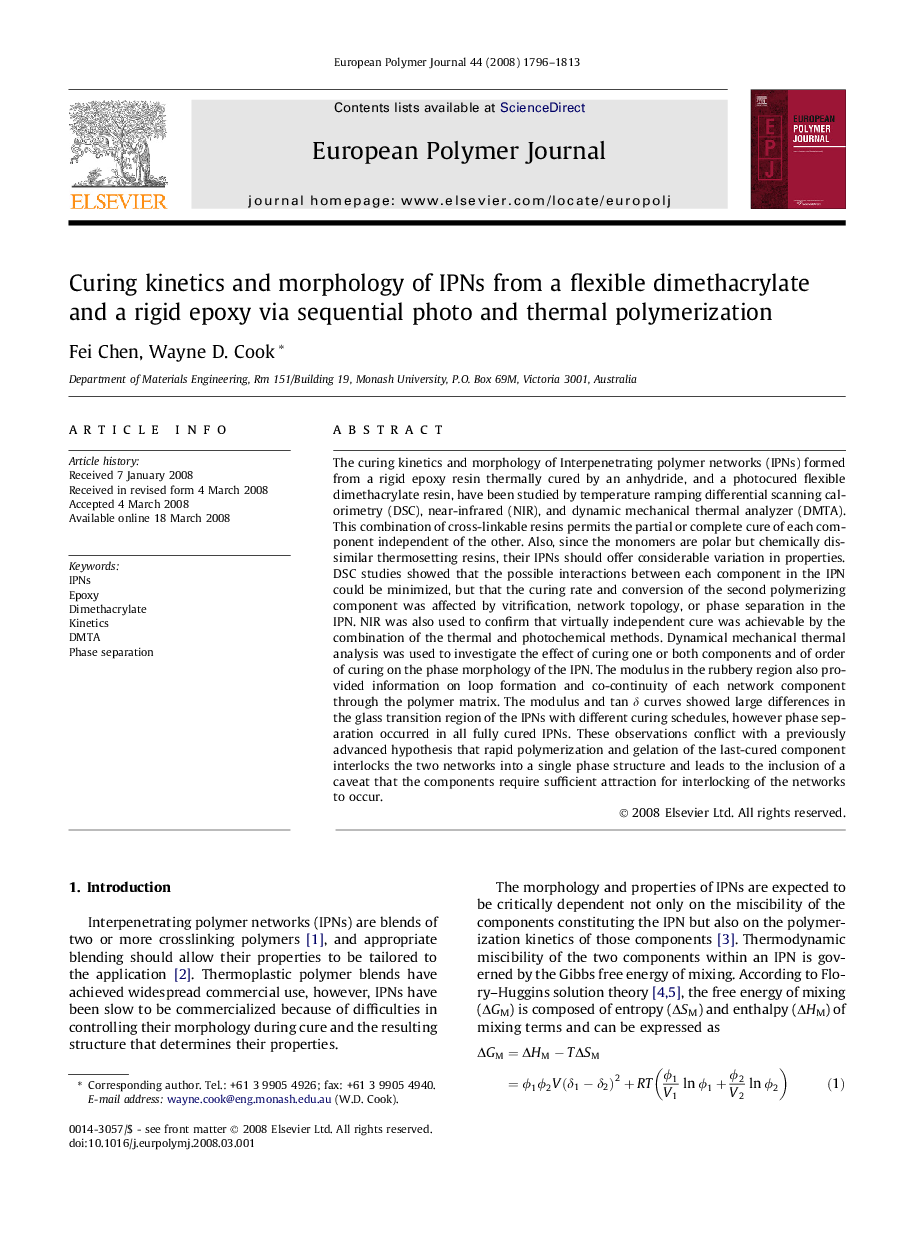| کد مقاله | کد نشریه | سال انتشار | مقاله انگلیسی | نسخه تمام متن |
|---|---|---|---|---|
| 1401024 | 984670 | 2008 | 18 صفحه PDF | دانلود رایگان |
عنوان انگلیسی مقاله ISI
Curing kinetics and morphology of IPNs from a flexible dimethacrylate and a rigid epoxy via sequential photo and thermal polymerization
دانلود مقاله + سفارش ترجمه
دانلود مقاله ISI انگلیسی
رایگان برای ایرانیان
کلمات کلیدی
موضوعات مرتبط
مهندسی و علوم پایه
شیمی
شیمی آلی
پیش نمایش صفحه اول مقاله

چکیده انگلیسی
The curing kinetics and morphology of Interpenetrating polymer networks (IPNs) formed from a rigid epoxy resin thermally cured by an anhydride, and a photocured flexible dimethacrylate resin, have been studied by temperature ramping differential scanning calorimetry (DSC), near-infrared (NIR), and dynamic mechanical thermal analyzer (DMTA). This combination of cross-linkable resins permits the partial or complete cure of each component independent of the other. Also, since the monomers are polar but chemically dissimilar thermosetting resins, their IPNs should offer considerable variation in properties. DSC studies showed that the possible interactions between each component in the IPN could be minimized, but that the curing rate and conversion of the second polymerizing component was affected by vitrification, network topology, or phase separation in the IPN. NIR was also used to confirm that virtually independent cure was achievable by the combination of the thermal and photochemical methods. Dynamical mechanical thermal analysis was used to investigate the effect of curing one or both components and of order of curing on the phase morphology of the IPN. The modulus in the rubbery region also provided information on loop formation and co-continuity of each network component through the polymer matrix. The modulus and tan δ curves showed large differences in the glass transition region of the IPNs with different curing schedules, however phase separation occurred in all fully cured IPNs. These observations conflict with a previously advanced hypothesis that rapid polymerization and gelation of the last-cured component interlocks the two networks into a single phase structure and leads to the inclusion of a caveat that the components require sufficient attraction for interlocking of the networks to occur.
ناشر
Database: Elsevier - ScienceDirect (ساینس دایرکت)
Journal: European Polymer Journal - Volume 44, Issue 6, June 2008, Pages 1796-1813
Journal: European Polymer Journal - Volume 44, Issue 6, June 2008, Pages 1796-1813
نویسندگان
Fei Chen, Wayne D. Cook,